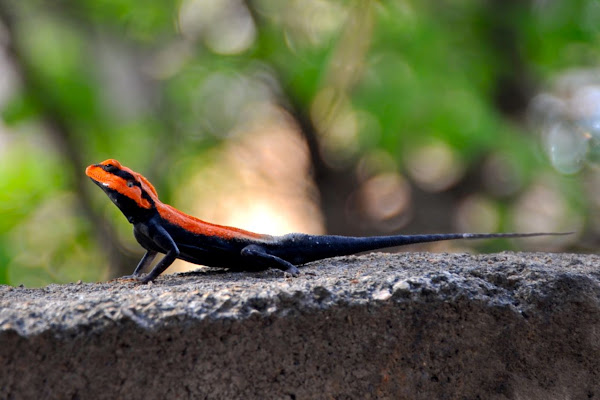The "
Big Four" is the name given to four venomous snake species responsible for causing the most snake bites in India/South Asia.
During the last three weeks of my stay in India (in the center of 12-million-people metropolis, I should add) three out of four members of this "killer" group have visited our garden.
First, about three weeks ago, we hosted a
Common Krait, which venom contains muscle-paralysis-inducing neurotoxin that leads to death by suffocation.
Then, about two weeks ago, a deadly and fearless
Naja naja (Spectacled Cobra) made the appearance. Local people seemed to be much more scared of the kobra than they were of the krait. I was told that Spectacled Cobras are very aggressive and, unlike most other snakes, they don't run away when people approach them but instead they attack. That was indeed the case with the kobra that came to our garden. It wasn't at all afraid of the group of five people observing it closely, and it was "starring" back at us with anticipation painted all over its agile body. It was clearly ready to attack if anybody would be foolish enough to make even a one more step in its direction. This suspense lasted a good hour giving me the opportunity to take several pictures of the kobra.
The kobra's venom contains both post-synaptic neurotoxin and cardiotoxin, so it can cause death either by paralysing muscles needed for respiration or by causing cardiac arrest. (Pick your poison, literally.)
After about an hour, the kobra got bored waiting for the people to leave and decided to look for a more peaceful rest place for itself. Unfortunately, it didn't look far and decided to enter cool and cozy pipes of our house! Needless to say, since then I open the bathroom's door with a lot of caution. I also insist on sleeping with closed windows, despite the heat.
Last week the third member of the Big Four group visited our lot. It was a young
Daboia (Chain Viper, Russell's Viper), which is responsible for causing the most snakebite incidents and deaths among all venomous snakes present in India because of its wide distribution and frequent occurrence in highly-populated areas. Daboia's venom induces thrombocytopenia, and eventually leads to death either from kidney, respiratory or cardiac failure, or from sepsis.
The last member of the Big Four group is
Saw-scaled Viper. It hasn't visited us yet, but I'm sure that it will. In fact, I expect it to show up this week, as the other three venomous snakes paid a visit with uncanny regularity within a week of each other.
Other frequent visitors to our house and garden include: monkeys, lizards, chameleons, geckos, and squirrels.
Geckos are a very common sight. Every day I see at least twenty of them running on the walls and ceilings of the house. They are very well behave, so we let them live in peace.
The monkeys, on the other hand, are not so welcome, as they occasionally get inside the house and steal food. They can also be quite aggressive and, if threatened, throw sticks and stones at people.
Chameleons are fun to watch, especially as they slowly climb the trees.
Another frequent visitor is a family of squirrels, which makes a nest in Anil's parents bathroom about four times a year. The squirrels have just moved out, as their little ones came of age and were ready to face the outside world. But we do expect the parents to be back with new kids in three months or so.
Orange-head lizards are a common sight too.

It's nice that we don't even need to leave the house to see all of these interesting animals.












































